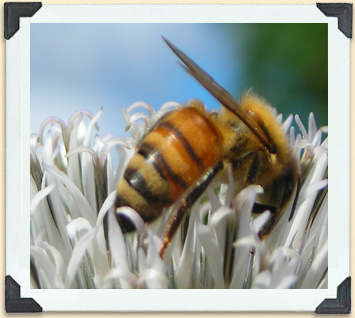Life in a Hive

Foraging worker bees collect nectar and pollen from flowers.
© University of Manitoba
Foraging
At midlife, worker bees begin to go out of the hive to collect nectar, a sweet liquid from flowering plants such as fruit trees, for the colony. They cover a radius of about 4 km from the hive and visit 4 410 000 flowers to make 1 kg of honey. A single worker bee makes just 0.8 g (1/10 of a teaspoon) of honey over a lifetime.
Foraging is a difficult and dangerous job for worker bees and, eventually, their bodies wear out. In the open fields, they face huge risks, such as getting chilled or even being eaten by a bird. They work as long as they can, but most worker bees die while out foraging.




